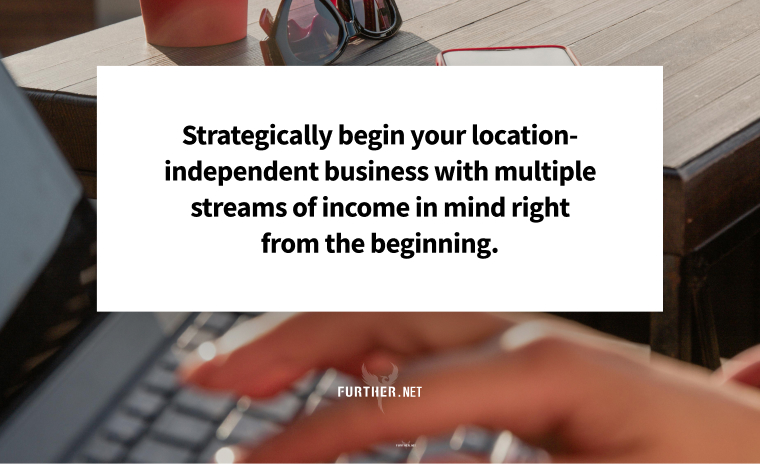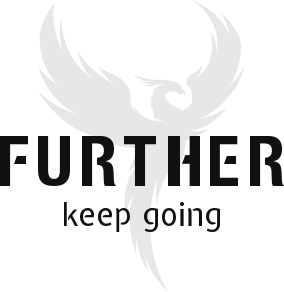
What comes to mind when you think of Disney?
Maybe you think of iconic movies from Marvel, Pixar, and the Star Wars franchise.
Or it could be the childhood characters we all know like Bambi, Snow White and the Seven Dwarves, or Mickey Mouse.
For others, it’s the theme parks. Disneyland in California, Disney World in Florida, or even Disneyland Paris.
But it all started with a young freelance cartoonist named Walt Disney.
Regardless of your feelings about Walt Disney the man, he provides a great example of what I call the personal enterprise approach.
Too many people look at his resulting business empire, and forget that it all started with one person honing their craft and spotting opportunities.
Walt built his business base with his expertise in cartooning, and then expanded into areas that few could have even imagined. One step at a time.
Many people also think when they start a business they have to know exactly what it will look like down the road. Or that they need to “swing for the fences” with some hugely ambitious startup.
On the contrary, just about everyone I know who has their own “digital business empire” started out as a freelancer or in some other client services role. And that includes me.
Today, the idea of the “side hustle” has become popular, usually to make extra cash. And there’s certainly nothing wrong with that if you need to supplement your income.
The more important concern is losing your job in your 50s, which is statistically likely and very difficult to recover from. The “eggs in one basket” situation is what you’ve got to escape, first and foremost.
I’ve always got a “side hustle” going even as a location-independent entrepreneur, but for me that means I work on my next project once the current initiative gets to a certain point.
So, if traditional employment is your current situation, you want to move from the one “client” (your employer) to a self-employment role with multiple clients. You can even keep your former employer on as an initial client.
Likewise, if you already have your own client services business, you want to diversify with products and other income sources. This requires an integrated approach to thinking about how your expertise can be translated into different formats.
The best of both worlds is to strategically begin your location-independent business with multiple streams of income in mind right from the beginning. I call this the Personal Enterprise approach.
Building Your Personal Enterprise
Freelancing and independent consulting have exploded over the last two decades, becoming the preferred way to make a living for many instead of just a fallback or side hustle. More than half of freelancers say that no amount of money would make them return to traditional jobs.
The toughest part of freelancing or any other client services business is getting the clients. It’s not enough to excel at your craft; you have to market your services in a way that gets you the quality of clients your work deserves.
Most people at this stage are caught in a feast or famine cycle. When there’s plenty of work, there’s very little thought given to ongoing marketing efforts. When the work dries up, there’s a panicked scramble to pay the bills.
The key is to set up a proactive pipeline that brings a steady stream of prospects. One that brings enough opportunity to give you the luxury of picking only the best projects.
Even better, this pipeline should bring you opportunities beyond client work so you can fully develop multiple streams of income, or your own personal enterprise.
For example, with enough prospects for your services, you’ll be more likely to see an opportunity to “productize” some or all of your offerings. This is a service designed to be sold like a product that has a very well-defined scope of work with set pricing displayed on your website.
At the core of a personal enterprise is an expertise-based initiative that helps guide others to solutions to specific problems they want to solve. It’s also the type of business I’ve started and run multiple times for the last 25 years.
When most people think about leaving a job, freelancing or consulting based on your years of experience and expertise immediately come to mind as an option. And that’s an excellent starting point, but there’s so much more to make of it with the right approach.
Let’s look at the common variations for expertise-based businesses:
- Consulting: In this familiar model, you use your experience and expertise to create solutions to problems. It’s a “do it for them” practice that also encompasses freelance services like writing, coding, and design.
- Coaching: In a coaching model, you provide individual or small group mentoring to help people achieve a desired result. This is a “done with them” practice.
- Courses: Finally, you can sell your expertise in the form of self-paced courses as digital products. This is the “do it themselves” option.
What you may not realize is that each model can lead to the next in succession, and your business can include all three. All it takes is a bit of strategic intention to build an expertise-based personal enterprise.
Based on what you learn from working directly with clients in a now location-independent business, you can then “productize” your expertise into frameworks that work as group coaching vehicles. And those same frameworks will allow you to teach your methodology in the form of one or more online courses.
Of course, the question that’s likely on your mind right now is:
“How do I attract clients, much less sell digital courses?”
The answer is you first attract an audience of people with the kind of problem you solve.
An Audience-First Marketing Model
Attracting an audience as the catalyst for a business is something I’ve done my entire 25-year entrepreneurial career and am considered a pioneer in. The approach has become more mainstream with the emergence of the creator economy.
If you’re not familiar with that term, the creator economy refers to a business model where those who create content get paid thanks to directly attracting an audience. Contrast that with the traditional approach of being compensated by a middleman such as a publisher, producer, or other “old media” entity that brought the audience to the content creator.
If you pay attention to mainstream media coverage of the creator economy, it will almost always have to do with people creating content on platforms like Instagram, TikTok, or YouTube. But the “audience-first” business model dates back to my ideas and practices in the early days of blogging and podcasting.
We may use social media to point people in the right direction, and that’s usually to an email list. In fact, the best attraction vehicle for your business would look something like an email newsletter like Further.
That’s because unlike with “creators” who are paid peanuts by the big social media platforms who make the rules, the superior way to sell consulting, coaching, and courses is by email messages that demonstrate your expertise. It’s the best digital sales channel there is, and it’s been that way for a long time – with no signs of letting up.
This approach is how I started three profitable seven figure companies between 2007 and 2009. I then went on to create an eight-figure software and hosting company in 2010 using the same audience-first model.
Since that business was acquired in 2018-19, I’m keeping things small. But it’s still possible to make hundreds of thousands or millions in high-margin revenue thanks to having an audience and a few crucial (but increasingly inexpensive) technology tools.
Believe it or not, email is more powerful than ever, even as social media has hit the skids. That’s good news for expertise-based entrepreneurs.
And here’s another thing… people don’t want a “content creator.” They want a leader who gives them hope and inspires trust that their problem can be solved.
Create Your Change
If the personal enterprise approach sounds like your personal dream come true, then you’re in the right place. But let’s not forget the potential downside of not pursuing your dream.
Your 50s and early 60s is a really bad time to not be in control of your income and business assets. One heartless decision by your employer can not only disrupt your income, it can but a huge dent in your retirement savings, which may not be enough in the first place.
Which is a cue to talk about the best business lesson Walt Disney ever learned.
Walt’s first real success was Oswald the Rabbit. He was Mickey Mouse’s predecessor.
But due to a legal fight with his employer, Disney lost the rights to Oswald.
Worse, he also lost his entire animation staff. This was a lesson Walt never forgot. He committed to working for himself from that day forward, and owning all his intellectual property.
Don’t let negative change just happen to you, and don’t let others exploit you or your work.
Create your change, and your own business assets. The best time to start is now.
Subscribe for free to Further for more. Or upgrade to Further Premium to get the full Personal Enterprise Accelerator course.
